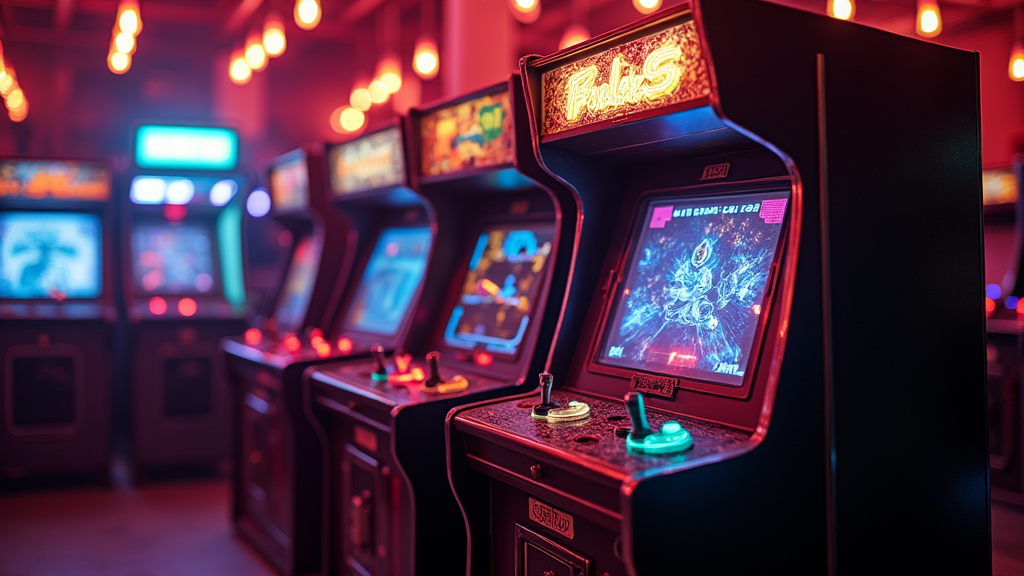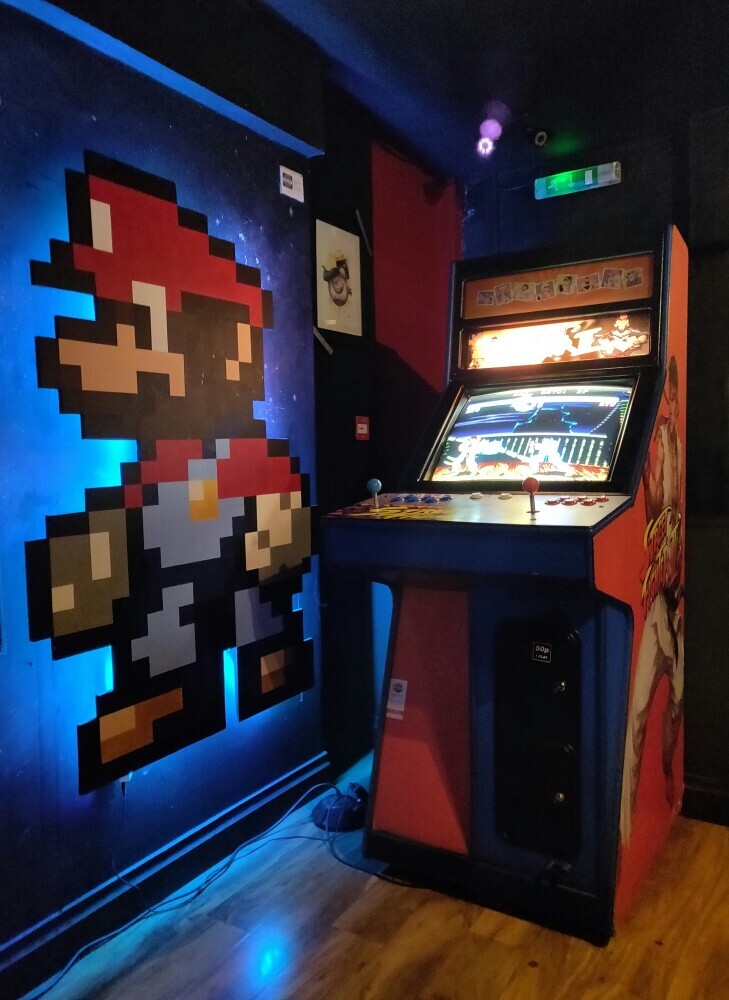Arcade Classics have a special place in the gaming scene, even in today’s fast-paced digital world. They continue to entertain and inspire players with their simple yet engaging gameplay, retro charm, and innovative design. This article covers the journey and current influence of arcade classics, highlighting their enduring legacy and role in modern gaming culture.

Arcade Classics: A Nostalgic Adventure
Arcade classics represent more than just old video games. They embody the spirit of an era when gaming was all about straightforward fun, unique challenges, and high scores. There was a time when arcades were the go-to spot for friends to gather, share laughs, and get involved in friendly competitions. Back then, vibrant cabinet designs and the distinctive sounds of coin slots combined with pixelated graphics to create a memorable ambiance that still resonates today.
These games were easy to learn but hard to master. Their simplicity in design allowed creativity to flourish, enabling game developers to check out new ideas with limited resources. From side-scrolling adventures and space shooters to puzzle challenges, each title offered its own unique form of engagement. As players stepped up to the machine, every moment was filled with anticipation and excitement, creating experiences that have endured over the decades.
Many enthusiasts continue to cherish these titles because they serve as a tangible link to the past. The design philosophy of these classics captured the essence of gaming during its formative years, and every beep and bloop carries embedded memories of simpler times. Taking a moment to reflect on those experiences offers not only nostalgia but also a deeper appreciation of how far interactive entertainment has come.
Enduring Charm and Lasting Legacy
One key reason arcade classics continue to capture hearts is their timeless charm. Many of these games were designed during a period when developers had to be resourceful. With limited computing power, they relied on inventive game mechanics to draw players in, which often meant that the gameplay itself was the most attractive feature. This focus on simplicity is something that still resonates with players today.
The lasting legacy of arcade classics can be seen in the way modern games incorporate retro elements into their design. Many contemporary titles pay homage to their predecessors by including pixel art graphics, chiptune soundtracks, or even game modes reminiscent of classic high-score challenges. Modern developers recognize the importance of accessible, fun gameplay and use arcade-inspired designs to create a bridge between the old and the new. The influence of these classics remains very important, as it continually inspires new generations of designers to think about how simplicity can go hand in hand with creativity.
Moreover, the cultural impact of arcade classics goes beyond technology and game mechanics. They have shaped a collective identity among gamers, serving as a nostalgic rallying point that bridges generational gaps. This common ground helps foster vibrant communities where stories and memories are freely shared, reinforcing the idea that these games are not simply relics of a bygone era but are active participants in a shared cultural experience.
Influence on Modern Gaming
Modern gaming owes much to the groundbreaking innovations of arcade classics. One area that shows this influence is game design. Many current titles, whether indie projects or AAA blockbusters, incorporate core mechanics that originated in arcades. The focus on tight controls and immediate feedback is something that many gamers still appreciate today.
Arcade classics introduced the idea that gameplay should be intuitive and rewarding. Designers learned to grab a player’s attention within moments—a lesson that has significantly shaped modern user interfaces, control responsiveness, and game pacing. Even in large, story-driven games, fleeting moments of quick reflex action and high tension often pay tribute to the thrills found in an arcade challenge.
Beyond mechanics, the business models that evolved from arcade culture have also left a mark. The pay-per-play model of old arcades can be seen in modern freemium games and microtransaction-based systems. Although the platforms and pricing structures have changed, the underlying concept remains: players enjoy engaging in short, satisfying challenges that can be experienced one token at a time.
In addition, arcade classics have helped shape the social aspect of gaming. The excitement of competing for high scores has transformed into the competitive spirit seen on global leaderboards and online tournaments today. This seamless integration of retro charm with advanced digital environments demonstrates that the values of simplicity and competitive fun are just as relevant now as they were decades ago.
Bridging the Gap: Arcade Classics and Contemporary Gaming Culture
While gaming technology has advanced tremendously, the influence of arcade classics creates an interesting bridge between generations. Older players may seek out these classics to recapture fond memories, while younger gamers are drawn to the straightforward action and accessible gameplay that these titles provide.
This dialogue between generations is important. In many cases, arcade classics serve as a cultural touchstone—a point where different ages and backgrounds can connect over shared experiences. Many modern arcades and retro game bars have popped up in cities worldwide, offering physical spaces where the old meets the new. These venues provide an environment that home gaming might not replicate, enabling people to share in a communal experience that celebrates the history of gaming.
The revival of retro gaming on home consoles and digital platforms also testifies to the enduring appeal of arcade games. Independent developers are busy cooking up new titles that blend old-school aesthetics with modern gameplay innovations. This creative mix enriches the overall gaming landscape, ensuring that the legacy of arcade classics remains vibrant and influential.
Community events and tournaments dedicated to arcade classics have become increasingly popular. Such gatherings are more than just competitions—they are opportunities to share personal histories, spark conversations, and nurture a sense of belonging among fans. In these moments, it becomes evident that arcade classics offer more than just enjoyment; they are a cornerstone of gaming culture that continuously inspires passion and collaboration.

Quick Guide to Enjoying Arcade Classics Today
For players interested in revisiting arcade classics or experiencing them for the first time, there are practical steps to step up the experience. Finding authentic emulators, mini-arcade cabinets, or vintage machines in local retro arcades can be a great start. It’s all about immersing yourself in what many consider the golden age of gaming.
If you’re new to arcade classics, here are some ideas that might help you get started:
- Explore Emulation Platforms: Many online platforms host a collection of classic arcade games. These services let you enjoy timeless titles from the comfort of your own home with minimal setup required.
- Visit Retro Arcades: If you have a retro game bar or arcade nearby, take a trip there. These establishments often curate an authentic arcade experience that revives cherished memories and introduces classic titles to a new audience.
- Collect Memorabilia: Arcade-themed merchandise and collectibles, such as replica cabinets and vintage posters, add a tangible element to your gaming journey. Each item tells a story of a time when games were simpler yet immensely captivating.
- Get Involved in Community Events: Look for local gatherings or online competitions focused on arcade classics. Participating in these events not only boosts your competitive edge but also connects you with others who share your passion for retro gaming.
- Learn the History: Dig into articles, documentaries, and books about the origins and evolution of arcade games. Understanding the challenges early developers faced and how they overcame them can be both enlightening and inspiring.
- Experiment with Modern Adaptations: Some newer games integrate arcade-style mini-games or challenges into their larger narratives. Playing these segments can offer insight into how classic ideas continue to influence today’s designs.
Taking these steps can maximize your enjoyment and provide insights into the enduring magic of arcade classics. The more you learn and play, the more you’ll appreciate how these games continue to influence modern gaming both technically and culturally.
Challenges and Considerations in Preserving Arcade Classics
Preserving arcade classics is not always straightforward. These games were originally designed for hardware that is now outdated, and obtaining original machines can be a tough task. Nevertheless, efforts to preserve and restore these titles have grown substantially in recent years.
Modern-day enthusiasts and preservationists work tirelessly to ensure that future generations can experience arcade classics as they were meant to be enjoyed. Efforts include digitizing game code, restoring old game cabinets, and creating emulation software that closely replicates the original experience. Such initiatives are part of a broader cultural commitment to safeguarding an important piece of gaming history.
Challenges such as funding limitations, legal rights, and issues related to software licensing and hardware scarcity often complicate these preservation projects. Despite these obstacles, the passion within the community remains unyielding. Fans and experts alike are rallying to make sure that arcade classics remain accessible and enjoyable. Their determination is a clear demonstration of how really important these games are to the overall fabric of our gaming culture.
Modern technology plays a critical role in these preservation efforts. Digital archiving, high-resolution scanning, and open-source emulation projects have all been game changers in making classic titles available to a wider audience. These projects not only speed things up but also open a door for a new era where arcade classics can live on in digital form for years to come.
Final Thoughts on the Modern Role of Arcade Classics
The legacy of arcade classics in gaming is both rich and multifaceted. While modern gaming often relies on high-resolution graphics and intricate storytelling, the straightforward appeal of arcade games continues to captivate audiences. Their influence is evident in game mechanics, art styles, community competitions, and even in efforts to keep their memories alive through preservation projects. Every coin inserted and every button pressed carries with it a story of creativity, fun, and innovation.
Modern gaming, with its blend of next-level aesthetics and advanced technology, shows that while we continue to push boundaries, there is undeniable value in looking back at the roots of the industry. These classic games not only inspire developers today but also serve as a reminder to players of the pure joy found in simple game design. They have a unique ability to connect generations, proving that although times change, the thrill of a well-made game remains timeless.
So, if you’re curious about the roots of game design or simply wish to experience straightforward yet challenging gameplay, consider jumping into arcade classics. Their impact on the world of gaming is undeniable, and by exploring these titles, you’re taking part in a continuing dialogue about what makes games engaging and accessible. Whether you’re a veteran or a newcomer, these timeless experiences offer something truly special.
Moreover, as technology continues to evolve and bridge the gap between past and present, preserving these treasures becomes even more important. It not only keeps a part of our cultural heritage alive but also provides inspiration and creative fuel for the next stage of gaming innovation. The story of arcade classics is far from over—it lives on with every game played and every new generation of gamers that picks up the controller.
